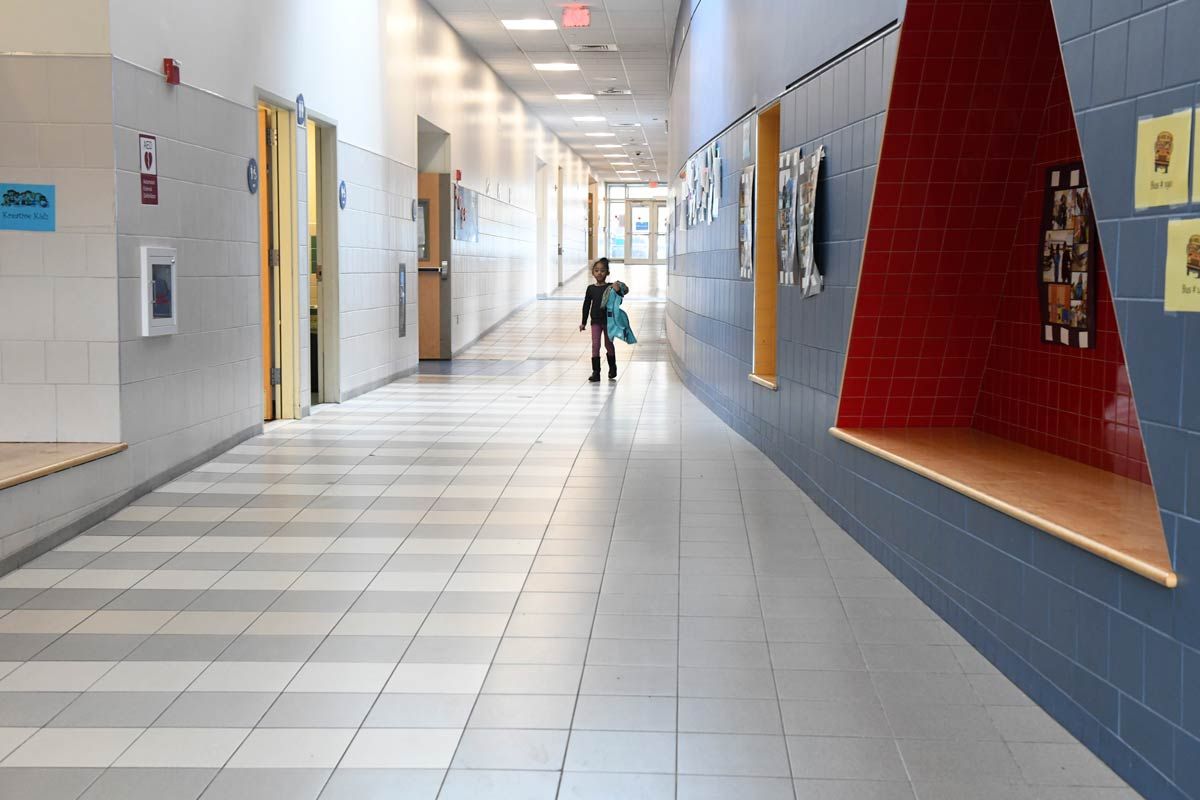
Public Schools as the Centers of Our Communities
Public schools in New York are the center of our communities. Unfortunately, too many of our communities are dealing with poverty, a lack of access to health and social services, housing and food insecurity, and a lack of reliable transportation and internet services. These conditions create a barrier against success in school and the workplace. Fully funded schools and well-designed, community-based wraparound services can provide much-needed support for communities and families in need.
 Improve Funding for Community Schools
Improve Funding for Community Schools
When a family struggles with food insecurity, poverty or lack of access to health care, a student’s academic performance can suffer. Community schools offer a valuable coordination of services to support students and families in need. This model goes beyond serving just the academic needs of students. Families are provided with support services which can include dental care, food banks, and mental health and preventative care. Families can access job and career resources and some community school programs even offer cooking or technology classes for adults to help them develop valuable personal and professional skills.
In a recent study of successful community school programs in New York City, community schools were proven to have a positive impact on student attendance, credit accumulation and on-time progression. Students experienced an increased sense of connectedness to adults and peers and there was a reduction in disciplinary incidents.[1]
Community Schools Link Families in Need With Valuable Resources
Despite all the challenges the COVID-19 pandemic created for education, one Rome Elementary school student was missing in-person classes for a seemingly unlikely reason: He didn’t have the proper shoes ...
Community schools link families in need with valuable services
Despite all the challenges the COVID-19 pandemic created for education, one Rome Elementary school student was missing in-person classes for a seemingly unlikely reason: He didn’t have the proper shoes.
Sadly, the impact of poverty on students is something Rome educators know all too well.
“The pandemic shined a light between the cracks,” says high school chemistry teacher Rob Wood. “The pandemic exacerbated the problems we already knew were there. Basic needs like lack of access to food, hygiene and shelter, transportation for medical appointments, mental health and social issues — educators have seen them manifest in the classroom for years. The pandemic only added to the stress.”
That’s why the Rome Teachers Association, which Wood leads, helped establish the district’s community schools initiative in 2017. Community schools provide things like on-site laundry, mobile health clinics and food pantries available to all students. But in Rome, the community school is also a network that partners with private businesses on joint initiatives, social service providers and non-profits to ensure families’ basic needs are met, so students can focus on education. Ultimately, for every $1 invested in the network, they’re able to provide upward of $20 worth of services thanks to cost-sharing arrangements with providers and both financial and non-monetary donations.
From March 2020 through the end of the school year in June 2021, Rome’s Connected Community Schools program, which also serves eight neighboring districts, distributed more than 8.3 million meals to more than 32,000 people, provided hygiene supplies to 5,700 individuals, school supplies to 3,500 students and had made referrals to more than 3,500 services and resources for 1,200 people. The community schools even served parents and grandparents who lacked access to technology at home and needed to learn new technology to keep up with remote learning demands.
Statistics tell only part of the story, though. Connected Community Schools has created an ethos that every person has a role to play.
When Rome Free Academy senior Jordan Purrington heard that an elementary student wasn’t coming to school because he lacked the right shoes, she established an emergency fund to cover the cost of warm boots for kids who lack them, sneakers for gym class or co-pays for families that can’t afford a medical appointment. The fund will be administered by Connected Community Schools moving forward.
“It broke my heart, but it also motivated me,” Purrington says. “There are so many kids in our community who are struggling to obtain basic necessities.”
At the core of effective community school initiatives is a well-planned coordination of services by a dedicated community school director/coordinator who helps support the unique needs of each community.
Funding for community schools has also been proven to be a sound investment. For every $1 invested in establishing a community school and hiring a site coordinator, the national average of return on investment (ROI) is more than $7.[2]
The Rome Connected Community Schools program — which serves Rome and eight neighboring districts — reports the average ROI is upward of $20 for every $1 invested in community school initiatives. In New York City, the United Federation of Teachers’ United Community Schools data shows $100,000 investment in a Community School director can bring in $600,000 in services and grants.
Unfortunately, out of 731 school districts statewide, only about 296 utilize the community school model, with offerings that vary.
Every district in New York should have access to resources to develop a community school model, including a designated community school director/coordinator – an essential resource to link pre-existing services and develop community partnerships.
 Future Forward Task Force Recommendation
Future Forward Task Force Recommendation
NYSUT recommends new annual funding of $100 million be provided in the 2022-23 state budget dedicated specifically for creating additional community schools and supporting the hiring of community school directors/coordinators to lead the critical work of aligning community services with family and student needs. These funds could potentially double the number of districts utilizing the community school model in New York state.
 Combat Food Insecurity: Provide free, healthy and nutritious meals to all students
Combat Food Insecurity: Provide free, healthy and nutritious meals to all students
The COVID-19 pandemic made clear what educators already knew: Schools feed kids. Once the pandemic struck, families could no longer rely on in-school breakfast and lunch to offset the food insecurity they faced at home. School food pantries and regional food banks were overwhelmed.[3] [4] Educators sprang into action, preparing tens of thousands of meals for families in need and distributing food throughout their communities.[5]
Even though children are now back in school, food insecurity continues to be one of the most significant challenges facing families of all sizes and socioeconomic statuses in New York. [6]
In many cases, assistance to families through Supplemental Nutrition Assistance Programs simply isn’t enough. Studies find that 75 percent of these benefits are depleted within the first two weeks of a family receiving them[7] underscoring the fact that these supports simply don’t meet the needs of families facing hunger.
Schools need the resources to provide meals to all students. Period.
“I once had a student ask me, ‘Can I take some of the leftover food home for my little brother? He’s not in school yet.' I recognized she was telling me that his not being in school meant he was not eating breakfast, or at least there was hunger in her home. I made sure she always went home with as much as I could send. Since then, I have kept the leftovers to be sent home as wanted and needed with any child who asks. Rochester actually started offering universal free meals pre-pandemic, and we’ve seen a big difference. In four or five years, I have had maybe five instances where a kid was acting out because they were hungry, whereas before universal meals, I had maybe five instances a week. When kids are hungry, they’re unable to learn because they can’t focus, and they can be a source of class disruption. We’re talking about a huge shift.”
~ Jason Valenti, 5th Grade Teacher, Rochester
Teachers report that when students have access to regular nutritious meals, their focus on their work increases, incidents involving discipline decrease and students’ perceptions of school safety increase.[8] Research has demonstrated that nutrition directly affects students’ thinking skills, behavior and academic performance. Poor nutrition can also indirectly impact student health, leaving them more susceptible to illness and resulting in increased school absences.[9] Healthy meals for all can be a game-changer for all students.
 Future Forward Task Force Recommendation
Future Forward Task Force Recommendation
The Task Force believes no-cost universal school meals should be made permanent, and unnecessary paperwork and income tests for participation should be removed to streamline families’ access to this essential service. NYSUT will continue to work with NEA and AFT to secure federal legislation to permanently provide universal free meals to all students, including summer and afterschool meals. In the meantime, NYSUT is calling on New York to set aside funding in the upcoming budget to supplement the cost of providing meals not covered by federal dollars, once the waivers expire, to ensure that all students have access to meals at no cost.
 Provide Access to Affordable Childcare Services
Provide Access to Affordable Childcare Services
Many students provide primary care for younger siblings before and after school due to the lack of adequate childcare in our communities. During the pandemic, that responsibility extended into the school day as families found themselves at home together juggling work, school and childcare. The problem was exacerbated when childcare providers were unable to operate due to the COVID-19 pandemic.
Kenmore Teachers Association 1st Vice President and high school math teacher Jeff Orlowski had a student during the pandemic who had to care for six siblings while they were all home for remote learning.
“This was one of our top students, but when things started off remote, I had a hard time even getting her to sign on. When she did start coming on, she was in a closet or hiding in her room in this little two-bedroom apartment, and you could hear what was going on every time she had to answer questions in class. And it had an impact on her grades. She couldn’t wait to get back to the classroom. The hurdles many families face are just insurmountable under the current situation.”
~ Jeff Orlowski, Kenmore Teachers Association 1st Vice President, math teacher
 Future Forward Task Force Recommendation
Future Forward Task Force Recommendation
The Task Force recommends that NYSUT work with childcare advocates to push for reimbursement reforms to support the development of affordable childcare opportunities, including an expansion of access to child care subsidies and other financial supports for low-income and middle-class families.





